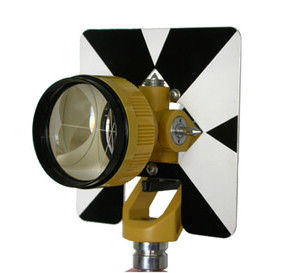-
Surveying Reflector Prism
-
Survey Mini Prism
-
360 Degree Prism
-
Total Station Prism
-
Prism Pole Bipod
-
Carbon Fibre Telescopic Pole
-
Telescopic Levelling Staff
-
Tribrach Adaptor
-
Instrument Tripods
-
Total Station Batteries
-
Total Station Battery Charger
-
Total Station Cable
-
Total Station Accessories
-
Surveying Instrument
Surveying Reflector 64mm Total Station Circular Prism 5/8x11 Female Thread

Contact me for free samples and coupons.
WhatsApp:0086 18588475571
Wechat: 0086 18588475571
Skype: sales10@aixton.com
If you have any concern, we provide 24-hour online help.
x| Prism Constant | 0mm/-30mm | Type | Single Prism |
|---|---|---|---|
| Prism Size | 64mm | Thread Type | 5/8x11 Female Thread |
| Package | Bubble Soft Bag | Target Plate | Metal |
| Color | Black And White | Prism Type | Topcon |
| Condition | New | Used For | Total Station |
| Highlight | 64mm Total Station Circular Prism,Surveying Reflector 64mm Circular Prism,5/8x11 Female Thread Circular Prism |
||
Surveying Reflector Prism 64mm Total Station Premier Prism Assemblies
Model: AK11
Prism Data:
- Prism Constant: 0mm/-30mm
- Type: Single Prism
- Color: Black and White
- Prism Size: 64mm
- Weight: 1Kg
- Used For: Total Station (Sokkia, Nikon, Trimble, Pentax, Topcon etc.)
- Package: Soft Yellow Carrying Bag
- Target Plate: Metal
- Thread Type: 5/8x11 female thread
Item Introduction:
This complete tilting prism assembly comes with a 64mm prism mounted in a sealed canister.
The prism can either be mounted in a -30mm or zero offset position.
With Removable Metal Target Plate.
Tilting knob can fix the prism angle.
High reflection rate by aluminum coated prism
Un-foggy by aluminum coating on prism and sealed structure
Prism Comes with a protective padded nylon carrying case.
What is an optical survey prism
Optical Survey Prisms are a specially designed retro reflector, specifically a corner reflector, that is used to reflect the Electronic Distance Measurement (EDM) beam from a total station.
A survey prism reflects the EDM beam back to its source with both a wide angle of incidence and with high precision
Prism Measuring Accuracy
The range of a prism results from, among other things, its coating and the glass geometry. Measurement errors occur frequently at close ranges when prisms without anti-reflex coating are used, as the front of a prism always directly reflects a certain percentage of a signal. Errors occur in the use of prisms without copper coating on the back side when moisture droplets accumulate or the prism becomes foggy.
High standard quality prisms have a special coating on the reflective surfaces – the Anti-Reflex Coating, and a copper coating on the reverse side. Without these, the range of distance measuring, ATR and Powersearch would be reduced by up to 30%. The workmanship and the durability of the copper coating are decisive for a long life.
The glass dimensions, the position in the holder and with it the areal orientation, are important for measuring accuracy.
Centring Accuracy
Measurement errors occur if poor quality prism holders are used. The holder and the prism constitute a unit with which the centring and repeat accuracy is defined. The smallest dimensional change in the geometry of a glass prism or on the holder can lead to a deviation from the centring axis and thereby create measurement errors.
Range
The beam deviation of a prism defines the its maximum range, according to the principle "entering beam should equal the exiting beam". The smaller the beam deviation (measured in angle seconds), the greater the directly reflected signal strength to the sender optic. The returned signal quality defines the maximum range of a measurement.
![]()
![]()







